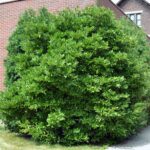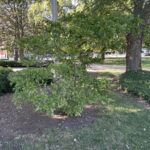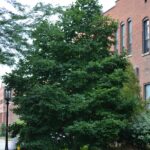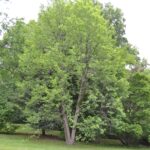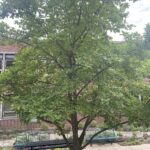Flower Notes:
White (Fragrant, white (with pink blush), 5.5" dia. flowers with 28-32 tepals (each 1.5-2.5" long) before leaves, in early April)
Foliage Notes:
Green (Summer foliage); Bronze (Rarely has the attractive yellow-bronze fall color)
Fruit Notes:
Red (Reddish-green cucumber-like pods with usually only a few attractive reddish-orange seeds in fall)
Soil Notes:
Prefers peaty, organic soil
Diagnostic Characteristics:
Leaves alternate, simple, 2-4" long and half as wide, obtuse tip then tapering to base, dark green above and pale green and reticulate below, generally glabrous. Flower buds are large (0.3-0.5" long) and silky. Stems are fragrant. Flowers are more open and larger (5.5" across) than the species, with many more, pink-blushed tepals (28-32).
